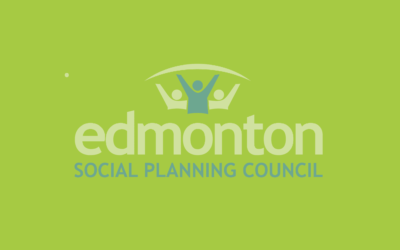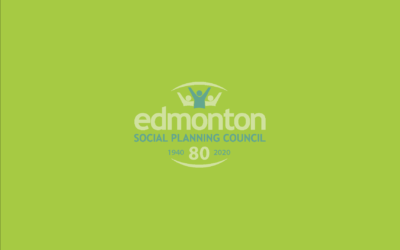Blog: The Renewed Push for a Basic Income During the COVID-19 Pandemic

Basic income is an old idea that is getting renewed and fresh attention as a result of the COVID-19 pandemic. Even before the pandemic occurred, the idea was starting to gain traction. This was observed through the candidacy of Andrew Yang seeking the Democratic nomination for U.S. president, the scholarship of University of Manitoba professor Evelyn Forget, and the advocacy of former Canadian senator Hugh Segal. Now with the economic upheaval triggered by public health measures to slow the spread of the virus, basic income has catapulted from being considered a fringe idea to one garnering mainstream interest and increased public support.
We’re even starting to see the implementation of a basic income in some form rolled out in different jurisdictions around the world as a result of the pandemic. This includes Spain, Brazil, Germany, as well as efforts to implement pilot programs in 11 major U.S. cities as a result of Stockton, California’s pilot program that has shown early signs of success. The idea is also being given consideration in Scotland. Within our own backyard, the Canada Emergency Response Benefit (CERB)—an income support program implemented in April 2020 to address the loss of income and employment experienced by millions of Canadians—has even seen calls to convert it into a basic income program. While the federal government has not shown an interest in pursuing this direction thus far (they plan to transition CERB recipients to a modified form of the Employment Insurance program), it’s clear that advocacy for a basic income will not be going away anytime soon.
At its core, basic income is about providing a certain sum of money to a country’s citizens with no strings attached. This ensures that everyone—regardless of their employment status and income levels—receives a guaranteed income so that they are able to afford the basic necessities that make life enjoyable (e.g. food, shelter, medicine, clothing, transportation, and recreation). Depending on the design of a basic income program, these cash payments could either reach everyone equally—rich, poor, or in-between—or target those with the lowest household incomes, and then progressively phase out as a household’s income rises. The idea has received support from a variety of quarters throughout history, including proponents across the ideological divide: progressive civil rights leader Martin Luther King, Jr. and conservative free-market capitalist Milton Friedman can be counted as supporters of the idea. Long-time followers of the Edmonton Social Planning Council may recall that we have advocated for some type of basic income going as far back as the 1970s, when a guaranteed annual income (with work incentives) was recommended in our 1973 report, Alternatives to Poverty and Welfare in Alberta.
Supporters of the basic income program see it not only as a poverty reduction tool, but as a way to address other systemic problems our society has not adequately confronted, such as systemic racism and domestic violence (the rationale being that this will empower marginalized groups to achieve greater autonomy and financial security to improve their situation). Previous trials of basic income pilot programs (which include studies in Dauphin, Manitoba in the 1970s and most recently Ontario in 2018) have shown evidence of improved health and well-being among participants, by way of nutrition, mental health, housing security, better employment prospects, and improved educational outcomes.
Amid all the buzz and activity surrounding discourse on basic income in Canada and around the world, the release of two major new reports bring forth important policy nuances to the discussion. The United Nations Development Programme’s (UNDP) Temporary Basic Income: Protecting Poor and Vulnerable People in Developing Countries makes the case for an emergency basic income as a measure to mitigate the worst immediate effects of the COVID-19 pandemic on poor and near-poor households that do not have access to social assistance or insurance protection. The report presents a number of policy options available to protect vulnerable people in 132 developing countries and helps to inform a larger conversation about how to build comprehensive social protection systems. The report notes that while there has been an expansion of social protection and assistance measures implemented on a global scale, the vast majority of this spending has occurred in high-income countries (including Canada) while developing countries have lagged behind. As a result, people in developing countries are less resilient to these kinds of economic shocks.
The World Bank’s Exploring Universal Basic Income: A Guide to Navigating Concepts, Evidence, and Practices takes a broader and more generalized approach to the basic income concept, presenting policy options and how they would align with the stated objectives of the program (i.e. a social justice initiative to address inequalities, or a measure to mitigate the negative effects of job loss due to automation). The document explores the appropriateness of a basic income program depending on the context of the country or region in question, providing options for areas where social assistance is patchy, limited, regressive, or otherwise inadequate.
The document does not make specific recommendations for or against a basic income, but provides a compass for policy-makers to help navigate key issues, contemplate trade-offs, and offer new data and analysis to better inform choices around the appropriateness and feasibility of a basic income program.
The World Bank and the UNDP’s reports help provide much-needed data and evidence to inform the conversation around basic income, especially for policy-makers looking to make an advocate’s hope for a more equal and just society come to fruition. The welfare and betterment of our most vulnerable populations depend on all of us to get this right.



